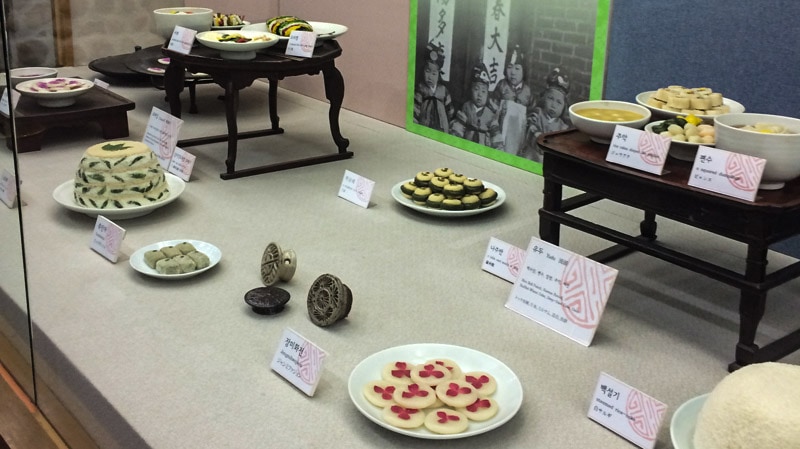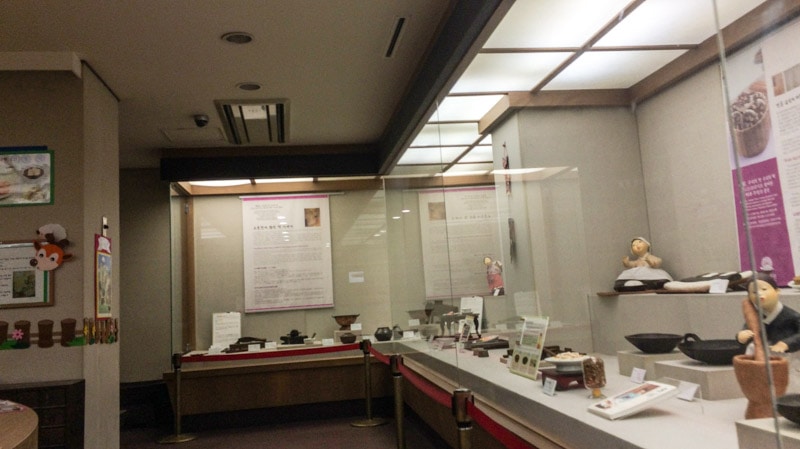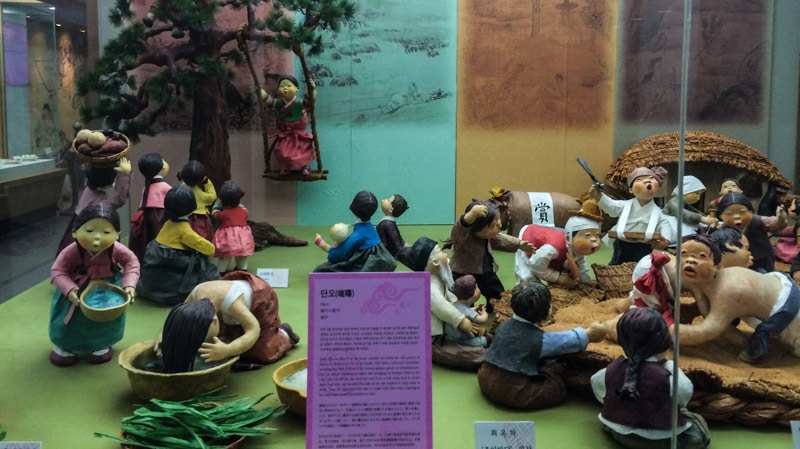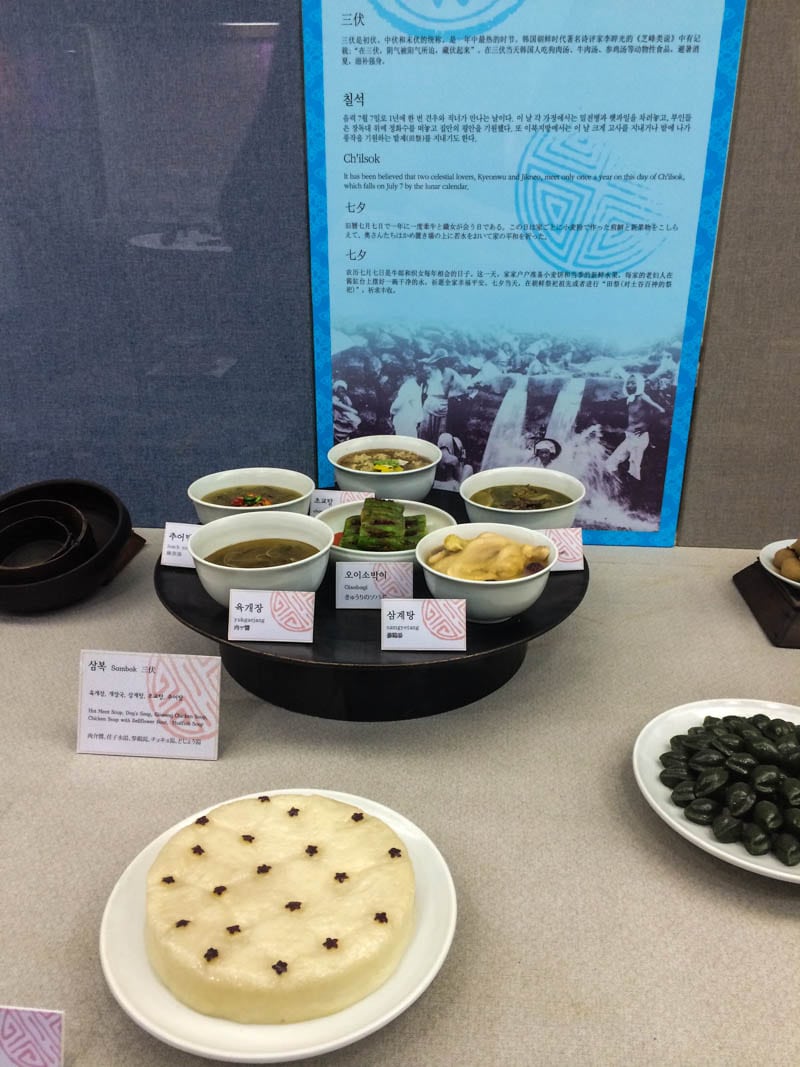
The Tteok Museum features displays of 50 different types of tteok, or rice cakes, and utensils used to make the dish enjoyed by generations of Koreans. The museum, located in Jongno-gu just east of Insadong, first opened in December, 2002.
Tteok is made using glutinous rice flour and can be made using several methods including streaming, pounding, frying, and boiling.
Steamed tteok is made by soaking the rice flour in water, grounding it, and placing it in a earthenware (siru) where it is steamed. Pounded tteok is made by pounding the rice flour in a mortar or flat wooden board.
Fried tteok is made by frying the rice flour in a hot pan with oil. Boiled tteok is made by simply dropping the rice flour in boiling water.


Consumption of tteok can be traced back to the Bronze Age around 850 B.C. During the Three Kingdoms period, the dish developed more and spread throughout the Korean peninsula. During the Goryeo (Koryo) period (918–1392), tteok became popular with not just the wealthy and aristocrats, but also with commoners. The dish became part of daily life including weddings, funerals, and other gatherings and ceremonies during the Joseon dynasty such as Chilseok (Traditional Festival) and Seollal (Lunar New Year).

Also on display are common household kitchen utensils that were used by the working class to make tteok and other foods. Many of the utensils found here are old but others are only 20 years old which not long ago did not attract any special attention but today generates cultural nostalgic settlement.
If you are hungry and want to try some tteok or thirsty for a cup of tea, stop by the cafe on the first floor.
Those who are interested can join a number of classes at the museum.
Rice Cake (Tteok) Class
This class describes the history of tteok, how it is made, and when it is consumed.
Cost : 50,000 won per person. Includes admission to the museum, information about tteok and food culture in Korea, demonstrations, and tastings.
Duration : 2 to 2.5 hours
Kimchi Class
This class shows participants the history and importance of kimchi, a quintessential spicy pickled cabbage side dish found on almost every dinner table across Korea. Participants also learn about the health benefits of kimchi and how it is believed to prevent cancer. No translator is provided.
Cost : 50,000 won per person. Includes admission to the museum, information about kimchi and food culture in Korea, demonstrations, and tastings. No translator is provided.
Duration : 2 to 2.5 hours
Traditional Dish Class
This class describes the typical dishes and food consumed by Koreans focusing on grains, beans, vegetables, meat, and seafood. Information includes what ingredients are used to make common dishes and what dishes are consumed in each of the four distinct seasons found on the Korean peninsula. Participants can also learn about and wear hanbok, a traditional Korean dress.
Cost : 70,000 won per person. Includes admission to the museum, information about food culture in Korea, hanbok wearing experience, demonstrations, and tastings of rice and soup. A translator is provided (English, Chinese, Japanese).
Duration : 2 to 2.5 hours
Last Updated on Mar 14, 2025